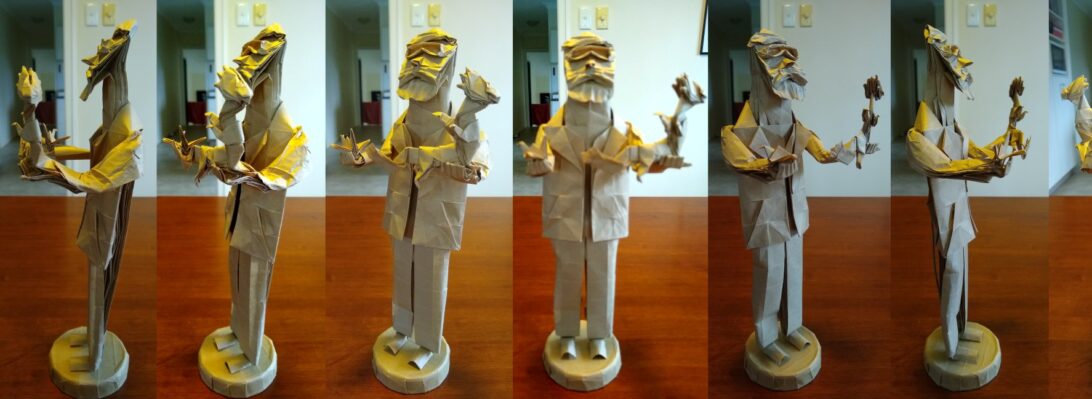Exploring Ilan Garibi’s lovely book “Origami Tessellations for Everybody”, the next “family” of folds starts off with “Childhood” and then evolves into more of the same:

This is almost a corrugation, as there are nearly no layers overlaying others – the surface treatment is deliciously dimensional, and the distortions are caused by paper tension and torsion of the underlying square-twists.

I started with standard cotton-based photocopy paper (which for me is a LOT like thin Elephant Hide) and laid in a square grid. Both childhood and childhood-evolved use off divisions. I folded a regular division (halves or thirds), then halved until I was close to the required grid sizes, then sliced off unneeded units before laying in the wedge-shaped mountain creases.
Continue reading

























